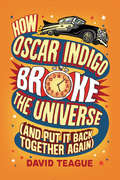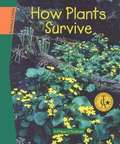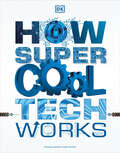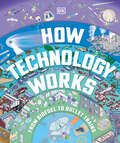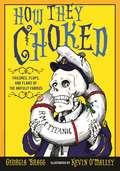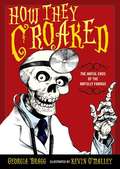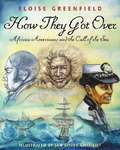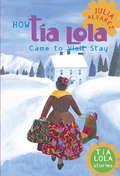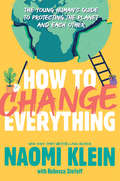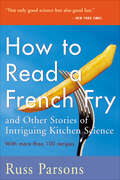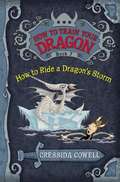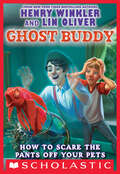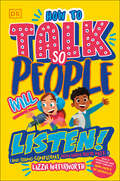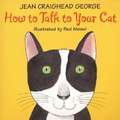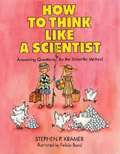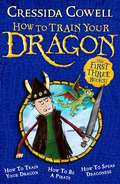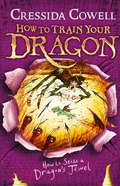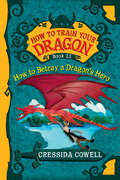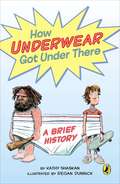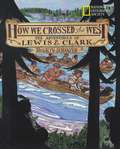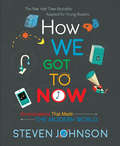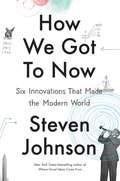- Table View
- List View
How Oscar Indigo Broke the Universe (And Put It Back Together Again)
by David Teague★ "Suspend all disbelief and enjoy." —Kirkus (starred review)From David Teague, the coauthor of the critically acclaimed Saving Lucas Biggs, comes a funny and sweet story about learning to have courage even when it feels like the world is ending.Oscar Indigo has never been good at baseball, so naturally he’s nervous when he has to fill in for his team’s injured All-Star, Lourdes. Luckily, Oscar has a mysterious gold watch that can stop time, which he uses to fake a game-winning home run. Now Oscar’s the underdog hero of his town and even Lourdes wants to be his friend. But the universe is a precarious place, and you can’t just steal time without any consequences. If Oscar doesn’t find a way to return the time he stole, the universe will unwind completely. Oscar wants nothing more than to ask Lourdes for help, but what would a baseball star like her think of a guy whose fake home run actually destroyed the universe? But as he and Lourdes grow closer, Oscar understands that it isn’t always what you do that makes you special—but who you are. And that confidence just might be the key to fixing the universe.
How Plants Survive (Science Links)
by Kathleen V. KudlinskiPlants compete with one another for sunshine and water, and they struggle to protect their own patch of soil. Find out how plants wage a constant battle for survival.
How Steven the Bear Invented S'mores (Steven the Bear)
by Scott HallHow Steven the Bear Invented S’mores is a read aloud picture book with fun life lessons and colorful illustrations. Steven the Bear and his friends are excited to go on their very first camping adventure. After being sure to pack and prepare well, the Bear Bunch heads out to find the perfect campsite. They set up camp and spend their day hiking, bird watching, and finding animals. After a day full of fun, Steven and the Bear Bunch sit down to toast marshmallows. That’s when Steven has a brilliant idea…? Join Steven the Bear and his friends in this first of many adventures!
How Super Cool Tech Works
by DKDiscover the mind-blowing high-tech inventions of the future! Incredible images reveal the secret inner workings of everything from drones and supercomputers to underwater hotels and flying cars.How Super Cool Tech Works explains how incredible technologies will shape the world of tomorrow. Explore robotics, space rockets, artificial intelligence, and even game consoles in this cutting-edge non-fiction science book for kids aged 9 and over. Also featured are state-of-the-art buildings, new ways of traveling, imaginative entertainment gadgets, and even how teleportation and invisibility cloaks might be possible in the future. Each exciting subject is explained in detail, via crisp images and engaging, child-friendly text. "How it works" panels explain each subject&’s secret inner workings.New and updated for 2020, How Super Cool Tech Works is a one-stop shop for kids who want to know what the latest and greatest technologies are, and how they will shape our world in the years to come.
How Technology Works
by DKGet inside the machinery of the modern world and understand the science that makes it all work.Have you ever been tempted to take the back off your TV? Have you wondered about what's going on beneath your feet on the street where you live? How Technology Works lifts the lid on the technology you use all the time but take for granted. It also takes you to places you'll never get the chance to see, such as the inside of a nuclear storage facility or the crew capsule on top of a moon rocket. The book takes you on a journey of discovery, starting with technology at work inside the human body before exploring cities and factories and then blasting off into space. Along the way, you'll lose yourself in super-detailed illustrations that reveal amazing hidden things and explain how they work.How Technology Works is an inspiring guide that makes technology fun, fascinating, and accessible for curious minds of all ages.
How They Choked: Failures, Flops, And Flaws Of The Awfully Famous
by Georgia BraggEveryone makes mistakes. Sometimes, epic failures even lead to super successes . . . sometimes they become deep dark secrets. But remember--to fail is human, to laugh about our shortcomings divine. From Montezuma II's mistaking a conqueror for a god to Isaac Newton turning from science to alchemy to J. Bruce Ismay's jumping the lifeboat line on theTitanic, How They Choked knocks fourteen famous achievers off their pedestals to reveal the human side of history. Successful “failures” include: Marco Polo, Queen Isabella of Spain, Montezuma II, Ferdinand Magellan, Anne Boleyn, Isaac Newton, Benedict Arnold, Susan B. Anthony, George Armstrong Custer, Thomas Alva Edison, Vincent van Gogh, J. Bruce Ismay, “Shoeless Joe” Jackson, Amelia M. Earhart
How They Croaked: The Awful Ends of the Awfully Famous
by Georgia BraggThis fascinating collection of remarkable deaths relays all the gory details of how 19 world figures gave up the ghost, including King Tut, Julius Caesar, George Washington, Edgar Allan Poe, and Henry VIII.
How They Got Over: African Americans and the Call of the Sea
by Eloise Greenfield Jan GilchristAfrican Americans have been drawn to the sea for hundreds of years. In this collection of biographies, Eloise Greenfield examines how that connection to the sea has influenced generations of African Americans -- from a shipbuilder-businessman during the American Revolution to the first woman and African American to hold the highest-ranking position in the National Oceanic and Atmospheric Administration Commissioned Corps. The lives of the extraordinary men and women included here create a stirring image of the powerful tie between African Americans and the water that has both bound them and set them free. Jan Spivey Gilchrist's artwork is as evocative as the profiles of the people it illustrates.
How Tia Lola Came to (Visit) Stay
by Julia AlvarezA delightfully entertaining story of family and culture from acclaimed author Julia Alvarez.Moving to Vermont after his parents split, Miguel has plenty to worry about! Tía Lola, his quirky, carismática, and maybe magical aunt makes his life even more unpredictable when she arrives from the Dominican Republic to help out his Mami. Like her stories for adults, Julia Alvarez's first middle-grade book sparkles with magic as it illuminates a child's experiences living in two cultures.From the Trade Paperback edition.
How Tia Lola Came to (Visit) Stay
by Julia AlvarezA delightfully entertaining story of family and culture from acclaimed author Julia Alvarez.Moving to Vermont after his parents split, Miguel has plenty to worry about! Tía Lola, his quirky, carismática, and maybe magical aunt makes his life even more unpredictable when she arrives from the Dominican Republic to help out his Mami. Like her stories for adults, Julia Alvarez's first middle-grade book sparkles with magic as it illuminates a child's experiences living in two cultures.From the Trade Paperback edition.
How To Change Everything: The Young Human's Guide to Protecting the Planet and Each Other
by Naomi Klein Rebecca StefoffA long-awaited guide to climate action and justice for young readers by bestselling, award-winning, internationally acclaimed writer and climate activist Naomi Klein.Temperatures are rising all over the world, leading to wildfires, droughts, animal extinctions and ferocious storms -- climate change is real. But how did we get to this state, and what can we do next? What if we could work to protect the planet, while also taking action to make life fairer and more equal for the people who live on it? We can -- if we're willing to change everything. In her first book written for young readers, internationally acclaimed, bestselling author and social activist Naomi Klein, with Rebecca Steffof, lays out the facts and challenges of climate change and the movement for climate justice. Using examples of change and protest from around the world, including profiles of young activists from a wide range of backgrounds, Klein shows that young people are not just part of the climate change movement, they are leading the way. How to Change Everything will provide readers with clear information about how our planet is changing, but also, more importantly, with inspiration, ideas, and tools for action. Because young people can help build a better future. Young people can help decide what happens next. Young people can help change everything.
How To Read A French Fry and Other Stories of Intriguing Kitchen Science: And Other Stories of Intriguing Kitchen Science
by Russ ParsonsWhy can you stick your hand into a 450-degree oven but not into 212-degree boiling water without burning it? Why does fish taste different from meat? Why do you cook pork differently from beef? Why should you always start cooking dried beans in cold water, not warm? Why should you never cook a Vidalia onion? What's the only kind of marinade that&’s really an effective tenderizer? Why is strawberry-rhubarb a good combination, scientifically speaking? And why don&’t potatoes fried in fresh oil ever brown completely, no matter how long they're cooked? &“Cooking is full of questions that science can help you answer, questions that can make you a better cook,&” writes the award-winning Los Angeles Times food editor, Russ Parsons. In this entertaining book packed with fascinating tidbits, Parsons explores the science behind such basic cooking methods as chopping, mixing, frying, roasting, boiling, and baking. You&’ll learn why soaking beans can&’t offset their gaseous effects, why green vegetables shouldn&’t be cooked under a lid for long, which fruits you can buy unripe and which you should buy fully ripened, which thickener to choose for your turkey gravy, and which piecrust is foolproof for a beginner. Along the way, Parsons slips in hundreds of cooking tips, provocative trivia, and touches of wit that make his scientific explanations go down smoothly. He also includes more than a hundred recipes that deliciously exemplify the principles he describes, from Tuscan Potato Chips and Crisp-Skinned Salmon on Creamy Leeks and Cabbage to Chocolate Pots de Creme and Ultimate Strawberry Shortcake.
How To Ride A Dragon's Storm
by Cressida CowellHiccup Horrendous Haddock III, everyone's favorite reluctant Viking hero, has three months, five days and six hours to discover America, get back to Berk, save his father, battle Polarserpents and win the annual Inter-Tribal Friendly Swimming Race. Can he do it?
How To Scare The Pants Off Your Pets (Ghost Buddy #3)
by Henry Winkler Lin OliverA middle schooler tries to teach a ghost some responsibility—but it doesn’t go as planned—in this tale by the New York Times–bestselling authors!When Billy Broccoli finds out his personal ghost, Hoover Porterhouse, is failing Responsibility, Billy decides it’s his mission to help Hoover turn his grade around. But how? Then inspiration hits. Billy is going to get Hoover a pet. There’s only one catch—the Hoove scares dogs out of their fur, birds out of their wings, and fish out of their gills. If Billy can’t find the perfect pet, how will Hoover ever learn and make the grade?Praise for Ghost Buddy: Zero to Hero“An endearingly uncool hero . . . Readers will root for Billy.” —Publishers Weekly
How To Talk So People Will Listen: And Sound Confident (Even When You’re Not)
by Lizzie WaterworthFind your voice and own the room, even when your legs are shaking!Professional cartoon voice artist Lizzie Waterworth tells you all about her strategies for confident speaking, from breathing exercises to what to do with your hands, and how to conquer that pesky inner voice that whispers "what if...?".Packed with funny stories from Lizzie's world of cartoons, and top tips from a host of professional voice artists and public figures, such as Stephen Fry, David Menkin, and BBC presenter Ben Shires, this book is full of practical advice to help you find your voice!'We teach our children reading and writing but we forget listening and speaking, which are essential life skills. Lizzie brilliantly fills that gap for speaking in this fun, easy to read manual for children of all ages (and parents too!). Every child should have this!' - Julian Treasure, top-10 TED speaker and author of How To Be Heard'The book looks really brilliant - I will definitely be using it for homework sessions with my younger ones.' - Dr Natalie Cawley, counselling psychologist and psychotherapist'Lizzie has a terrific way of helping folks overcome natural fears about speaking in front of others, and this book very much captures her spirit and energy. In How to Talk so People Will Listen, she draws on her professional knowledge and experience to treat the topic seriously while also making it fun.' - James Tierney, Yale University English Language Programs'This book is perfect for helping young ones learn essential skills and grow self-confidence all whilst having fun reading!' - Claudia Dalley, Head of POP Channels'This book is great because it's instructional without being full of jargon...and it's funny too! Definitely one for children and adults even!' - Monique Berry, Headteacher'It&’s like a cartoon on the outside and inside the playfulness continues. I really think this book is an invaluable resource. Although this book is designed for young people, Lizzie&’s advice is applicable to people of any age.' - Ranny Levy, Founder and President, KIDS FIRST! / Coalition for Quality Children's Media
How To Talk To Your Cat
by Jean Craighead George Paul Meisel Sue TruesdellFind out what your cat is really saying -- and talk back! What is your cat telling you when he rubs against your leg? What does it mean when he holds his tail straight up? Discover the different kinds of meows and what they mean; find out how to read whiskers, tails, facial expressions -- and much more! Jean Craighead George, award-winning author of over 80 books about nature and animals, demonstrates in words and photos how to communicate with that ever-mysterious, ever-lovable animal -- the cat. Children's Books 2000-NY Public Lib.
How To Think Like A Scientist: Answering Questions By The Scientific Method
by Felicia Bond Stephen P. KramerEvery day you answer questions-dozens, even hundreds of them. How do you find the answers to questions? How can you be sure your answers are correct? Scientists use questions to learn about things. Scientists have developed a way of helping make sure they answer questions correctly. It is called the scientific method. The scientific method can help you find answers to many of the questions you are curious about. What kind of food does your dog like best? Is your sister more likely to help you with your homework if you say please? Can throwing a dead snake over a tree branch make it rain? The scientific method can help you answer these questions and many others. Stephen Kramer's invitation to think like a scientist, illustrated by Felicia Bond's humorous and appealing pictures, will receive enthusiastic response from young readers, scientist and nonscientist alike.
How To Train Your Dragon Collection: The First Three Books! (How to Train Your Dragon #999)
by Cressida CowellCollected together for the first time, read the first three books that inspired the How to Train Your Dragon films: How to Train Your Dragon/ How to Be a Pirate/ How to Speak Dragonese Hiccup Horrendous Haddock the Third is a smallish Viking with a longish name. Hiccup's father is chief of the Hairy Hooligan tribe which means Hiccup is the Heir to the Hairy Hooligan throne - but Hiccup feels like a very ordinary boy. Can he be a Hero?This book bundle contains the first three hilarious stories in Hiccup's adventures with his dragon, Toothless. Will Hiccup lead ten novices in their initiation into the Hairy Hooligan Tribe. Can he steal back his book of Dragonese from the Romans? Can he navigate the Fortress of Sinister, and defeat the Monstrous Strangulator?Most importantly, can Hiccup really save the Isle of Berk with a dragon who looks like an ickle brown bunny with wings? There's only one way to find out...
How To Train Your Dragon: Book 10 (How To Train Your Dragon Ser. #10)
by Cressida CowellRead the HILARIOUS books that inspired the HOW TO TRAIN YOUR DRAGON films! Hiccup Horrendous Haddock the Third is a smallish Viking with a longish name. Hiccup's father is chief of the Hairy Hooligan tribe which means Hiccup is the Hope and the Heir to the Hairy Hooligan throne - but most of the time Hiccup feels like a very ordinary boy, finding it hard to be a Hero. When we last left Hiccup things were getting very dark indeed. The Dragon Rebellion has begun. Snotlout is the new Chief of the Hooligan Tribe. Stoick has been banished and given the Slavemark. And Alvin the Treacherous has EIGHT of the King's Lost Things, and has been proclaimed the new King of the Wilderwest ... But what can Hiccup do, now all alone and in exile, hunted by both humans and dragons? Can he find the Dragon Jewel, mankind's last and only hope and become the Hero once again?***Please note this ebook is TEXT ONLY and does not include the illustrations that appear in the printed book.***READ ALL 12 BOOKS IN THE SERIES!You don't have to read the books in order, but if you want to, this is the right order:1. How to Train Your Dragon2. How to Be a Pirate3. How to Speak Dragonese4. How to Cheat a Dragon's Curse 5. How to Twist a Dragon's Tale6. A Hero's Guide to Deadly Dragons7. How to Ride a Dragon's Storm8. How to Break a Dragon's Heart9. How to Steal a Dragon's Sword10. How to Seize a Dragon's Jewel11. How to Betray a Dragon's Hero12. How to Fight a Dragon's FuryHow to Train Your Dragon is now a major DreamWorks franchise starring Gerard Butler, Cate Blanchett and Jonah Hill and the TV series, Riders of Berk, can be seen on CBeebies and Cartoon Network.
How To Train Your Dragon: How to Betray a Dragon's Hero
by Cressida CowellIn Hiccup the Viking's misadventures, the stakes have never been higher, and it's friend versus foe to decide the fate of the world. In this, the penultimate title in the amazing story arc that began with How to Train Your Dragon, Hiccup is faced with a personal dilemma against the backdrop of an impending battle and the possible destruction of everything he knows.
How Underwear Got Under There: A Brief History
by Regan Dunnick Kathy ShaskanDid you know that warriors at the time of Genghis Khan invented arrow-resistant silk underwear? Or that the recommended age to begin wearing a corset in the late 1800s was four years old? Or that King Tut had a particular fondness for underwear? He was buried with 145 pairs!<P><P> This lively text consists of ten chapters on various aspects of underwear, including the social and historical ramifications of different undergarments and their development for warmth, support, protection, cleanliness, and status. Regan Dunnick’s clever illustrations and Kathy Shaskan's accessible text is giggle-worthy, page-turning, and well-researched. From boxers to bustles to briefs, from history to humor, from support to society, the story of underwear is the story of humanity itself.
How We Crossed The West: The Adventures Of Lewis And Clark
by Rosalyn SchanzerTHE YEAR: 1804<P><P> THE MISSION: To search for a river route across the western united states all the way to the Pacific Ocean, mapping and exploring this uncharted land for the U.S. government.<P> THE EXPLORERS: MERIWETHER LEWIS AND WILLIAM CLARK: Two military men, a crew of adventurers, and a dog named Seaman.<P> Join Lewis and Clark and their Corps of Discovery on an incredible, historic, and unforgettable journey.
How We Got to Now: Six Innovations That Made the Modern World
by Steven JohnsonDid you drink a glass of water today? Did you turn on a light? Did you think about how miraculous either one of those things is when you did it? Of course not--but you should, and New York Times bestselling author Steven Johnson has. This adaptation of his adult book and popular PBS series explores the fascinating and interconnected stories of innovations--like clean drinking water and electricity--that changed the way people live.Innovation starts with a problem whose solution sets in motion all kinds of unexpected discoveries. That's why you can draw a line from pendulums to punching the clock at a factory, from ice blocks to summer movie blockbusters, from clean water to computer chips.In the lively storytelling style that has made him a popular, bestselling author, Steven Johnson looks at how accidental genius, brilliant mistakes, and unintended consequences shape the way we live in the modern world. Johnson's "long zoom" approach connects history, geography, politics, and scientific advances with the deep curiousity of inventors or quirky interests of tinkerers to show how innovation truly comes about. His fascinating account is organized into six topics: glass, cold, sound, clean, time, light. Johnson's fresh exploration of these simple, single-syllable word concepts creates an endlessly absorbing story that moves from lightning strikes in the prehistoric desert to the herculean effort to literally raise up the city of Chicago to laser labs straight out of a sci-fi movie. In other words, it's the story of how we got to now!
How We Got to Now: Six Innovations That Made the Modern World
by Steven JohnsonFrom the New York Times-bestselling author of Where Good Ideas Come From and Everything Bad Is Good for You, a new look at the power and legacy of great ideas. In this illustrated volume, Steven Johnson explores the history of innovation over centuries, tracing facets of modern life (refrigeration, clocks, and eyeglass lenses, to name a few) from their creation by hobbyists, amateurs, and entrepreneurs to their unintended historical consequences. Filled with surprising stories of accidental genius and brilliant mistakes--from the French publisher who invented the phonograph before Edison but forgot to include playback, to the Hollywood movie star who helped invent the technology behind Wi-Fi and Bluetooth--How We Got to Now investigates the secret history behind the everyday objects of contemporary life. In his trademark style, Johnson examines unexpected connections between seemingly unrelated fields: how the invention of air-conditioning enabled the largest migration of human beings in the history of the species--to cities such as Dubai or Phoenix, which would otherwise be virtually uninhabitable; how pendulum clocks helped trigger the industrial revolution; and how clean water made it possible to manufacture computer chips. Accompanied by a major six-part television series on PBS, How We Got to Now is the story of collaborative networks building the modern world, written in the provocative, informative, and engaging style that has earned Johnson fans around the globe.

